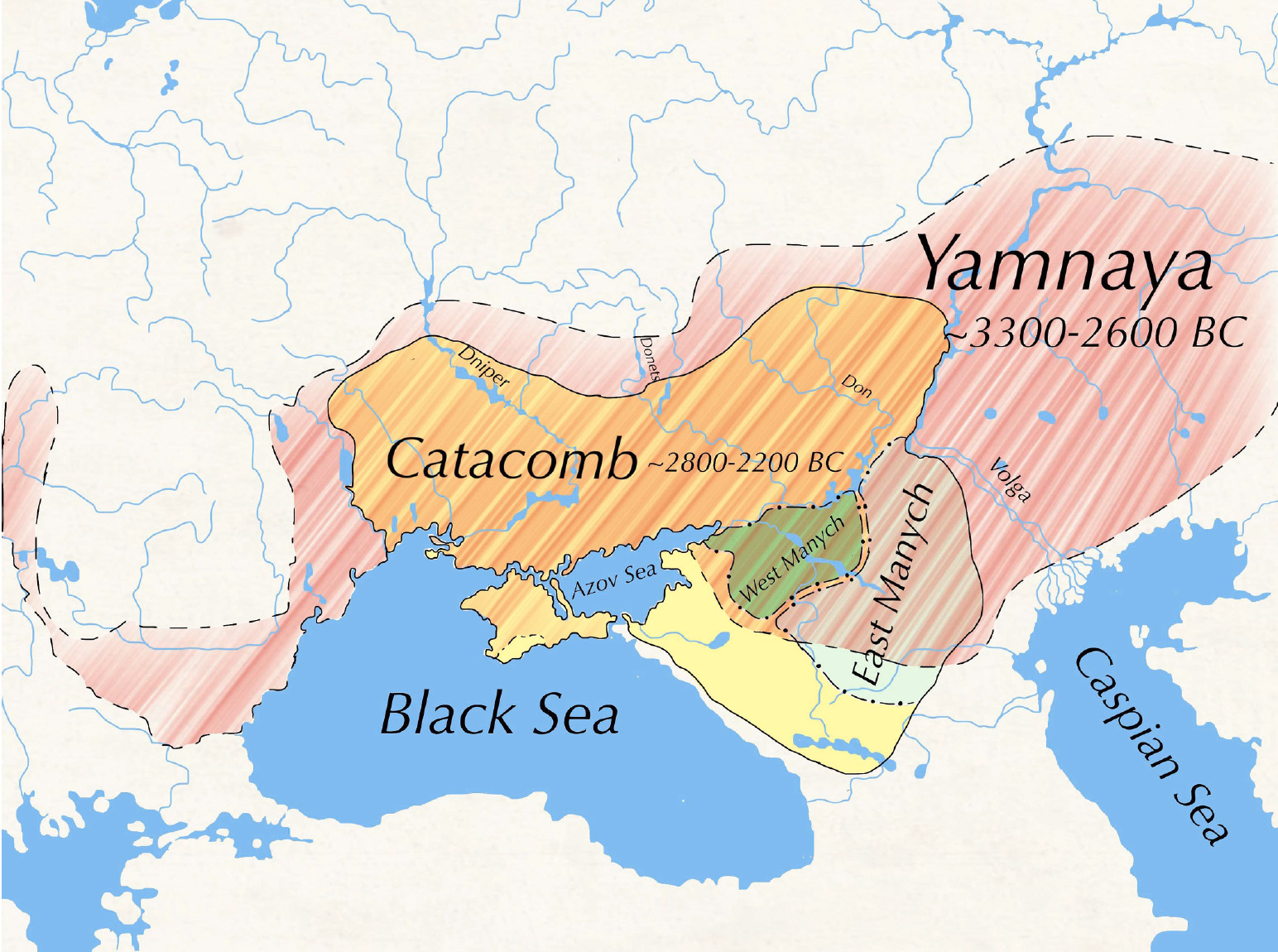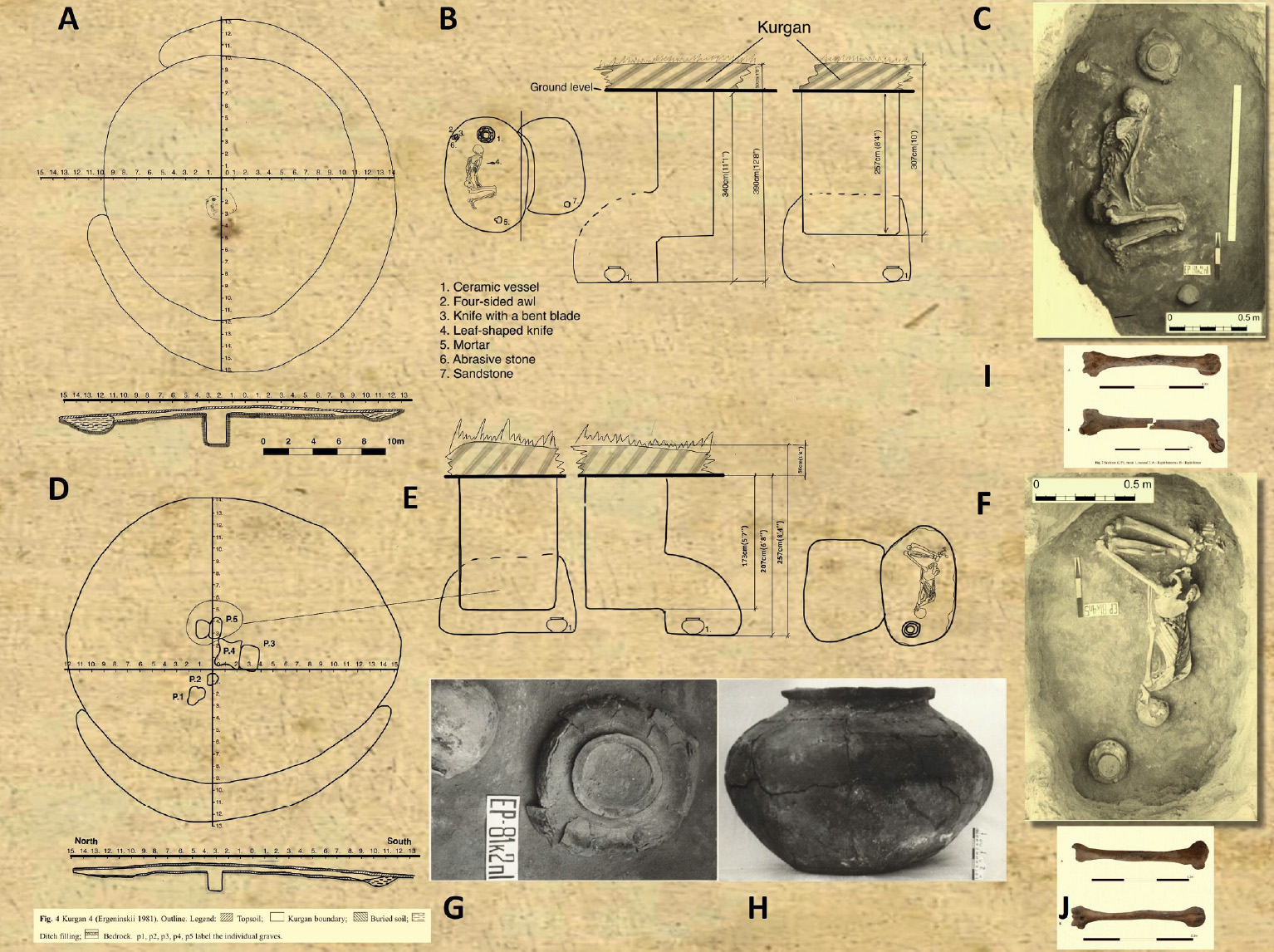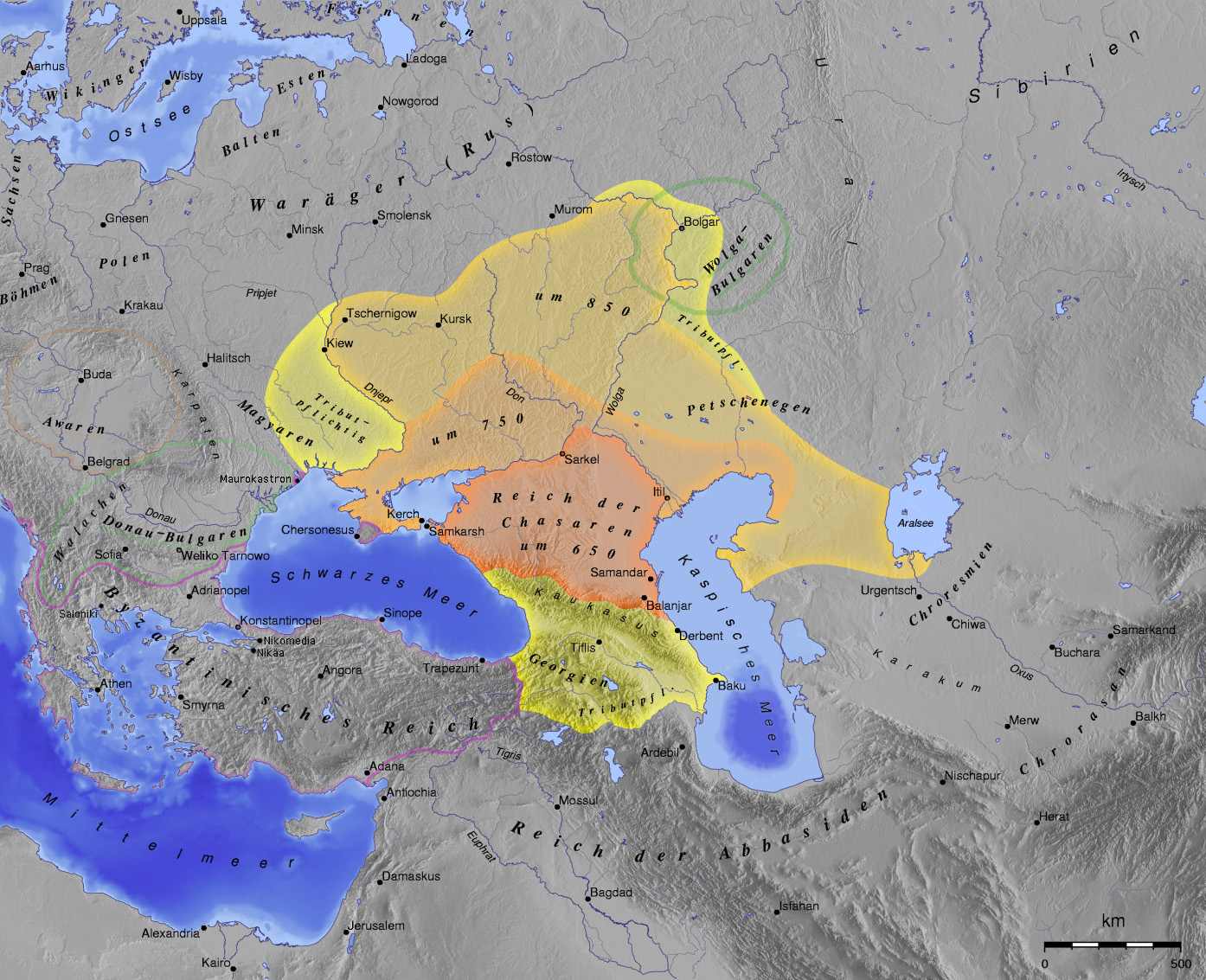Eurasian Steppe Cultures
We are working collaboratively with Russian scholars to explore the genetic ancestry of archaeological populations from the Russian steppe.
Catacomb Culture
A major subdivision of the Bronze Age Kurgan Culture of southern Russia and the Ukrainian steppes that is characterized by the use of so‐called catacomb graves. Dating to the period c.2600–2200 bc, these graves are buried deposits in a niche cut into the side of a shaft excavated into the ground. Following the deposition of the corpse and associated grave goods, the shaft was refilled and a round barrow (kurgan) built over the top of it.

Bronze Age Cultures of the Southern Russian Steppes
Map from Ochir-Goryaeva et al. (2021)

Kurgans Analyzed in Ochir-Goryaeva et al. (2021) Study
(A) Kurgan 2, plan (view from the top), (B) Kurgan 2, profile (cross-section), (C) Burial in the Kurgan 2, (D) Kurgan 4, plan, (E) Kurgan 4, burial 5, profile, (F) Burial 5 in the Kurgan 4, (G) ceramic vessel in the Kurgan 2, (H) ceramic vessel in the Kurgan 4, burial 5, (I) K2P1 femur bones used for DNA analysis, (J) K4P5 femur bones used for DNA analysis.
Khazar Empire
The Khazars were a confederation of Turkic-speaking tribes that, in the late 6th century CE, established a major commercial empire covering the southeastern section of modern European Russia.

Image of Khazar Warrior
Image source: XXXXXX

Map of the Khazar Empire
Image source: https://en.wikipedia.org/wiki/Khazars
Publications
Ochir-Goryaeva MA, Kornienko IV, Faleeva TG, Aramova OY, Makhotkin MA, Kekeev EA, Burataev EG, Kukanova VV, Sidorenko YS, Chartier DR, Schurr TG, Tatarinova TV. 2021. Ancestry and identity in Catacomb culture burials: A meta-tale of graves, skeletons, and DNA. J Archeol Sci: Reports 37: 102894. Link
Kornienko IV, Faleeva TG, Schurr TG, Aramova OY, Ochir-Goyaeva MA, Batieva EF, Vdovchenkov EV, Moshkov NE, Kukanova VV, Ivanov IN, Sidorenko YS, Tatarinova TV. 2021. Y-chromosome haplogroup diversity in Khazar burials from southern Russia. Russ J Genet 57: 477-488. Link
More information
Forthcoming
Laboratory of Molecular Anthropology
University of Pennsylvania
421 University Museum
3260 South Street
Philadelphia, PA 19104-6398, USA
Tel: 215-573-2656

FOLOW US:
